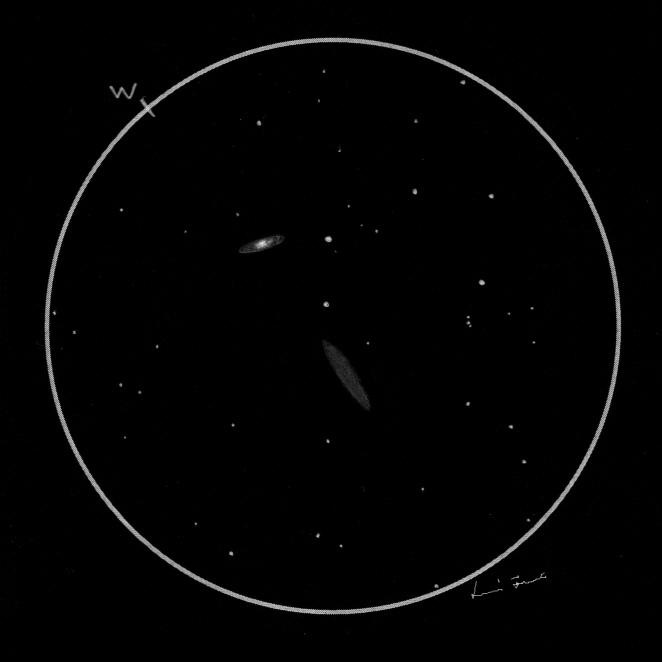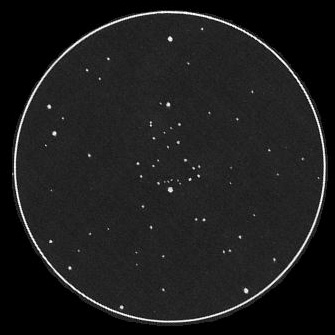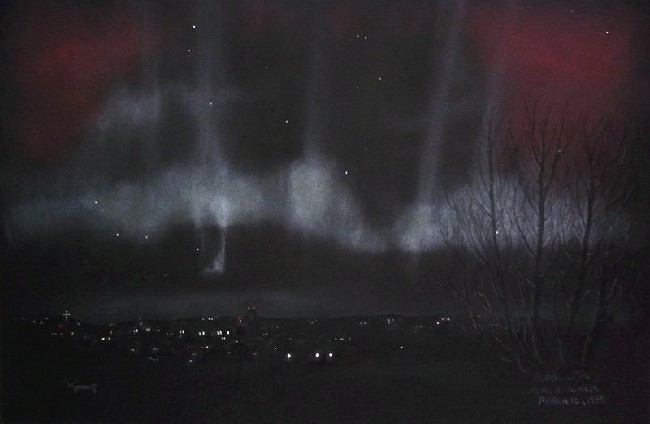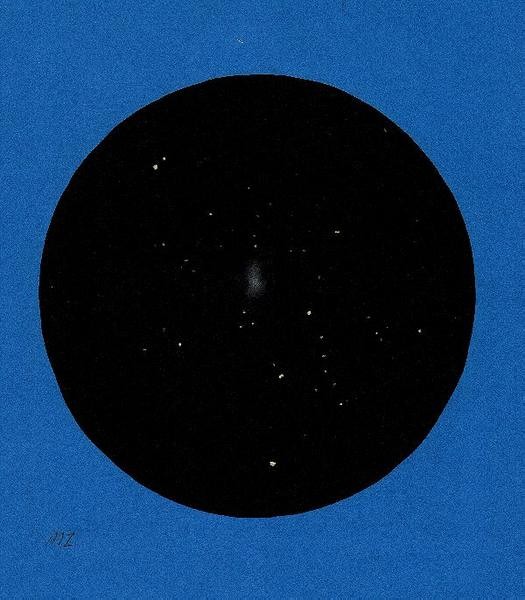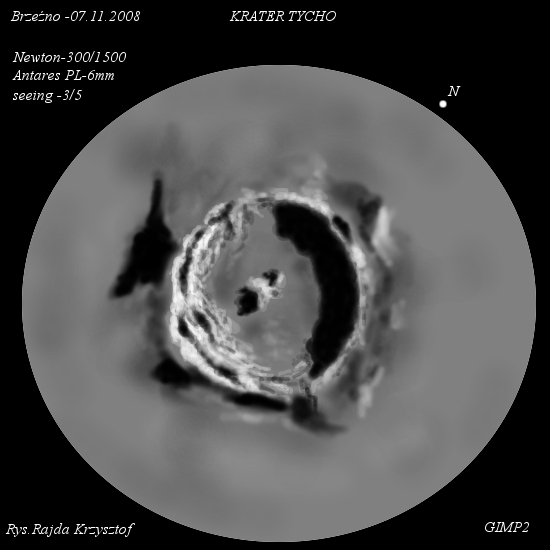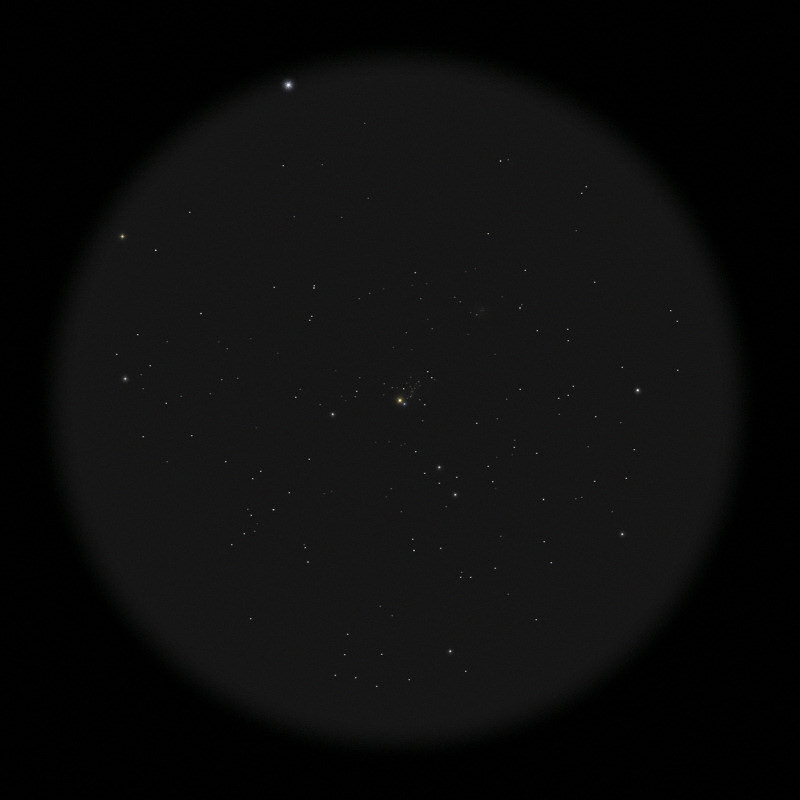
NGC 457
Sketch and Details by Rony De Laet
Binocular Icon 50 : The Phi Cas Cluster, NGC 457.
This observation is the 50th entry in my little binocular project that I started on March 31 of last year. Most of these objects were not hard to locate, nor did I have to dig deep to find them. I even had to skip some objects, due to a lack of time or bad weather. If someone would have challenged me a year ago to find 50 sketch-worthy binocular objects, I might have called him crazy. Today I know better. I realize that one year is not enough to sketch the most interesting binocular objects. This project is still fun to do, prove of it is the collected dust on my Skywatcher refractor tube. Binoculars really have me fascinated with their magical views of the sky. People ask me if I don’t run out of objects. But so many binocular challenges lie ahead. We shall see how long my project will continue.
At this point, I want to thank all of you who have supported me in this project. Your friendly replies to these sketches have kept me going. Thanks a lot!!
NGC 457, the Phi Cas Cluster, is one of the most fascinating clusters in the whole sky. With an apparent magnitude of 6.4 and a size of nearly 20’, NGC 457 is not extra-ordinary bright, nor is it extremely large. Its true splendour comes from its stunning appearance in the eye-piece. It doesn’t take much of your imagination to see some kind of a creature, like an owl, or Spielberg’s ET, or an airplane. The cluster shows bar shaped body, with on both ends two stars, presenting the feet and the eyes of the creature. On both side of the bar, a small chain of stars represent the arms. With 8×56 bino’s, the cluster is difficult to resolve. The low power view reminds me of a fighter jet with glowing exhaust pipes. The 15×70 bino’s allow for a better resolution of the cluster’s main body. A comic book figure comes to my mind. It seems to wave with its arms. The mag 5 Phi Cas seems to show an orange hue. NGC 457 is 8.200 l-y away, residing in the Perseus spiral arm.
A nice little bonus is offered by NGC 436 at 40’ NW of NGC 457. In my 15×70 I could detect NGC 436 as a small amorphous patch. This little cluster does look very remote. In fact it is 10.700 l-y away and 25 times less luminous than NGC 457.
The Phi Cas Cluster is easy to look up. It can be found at 2° SSW of Delta Cas (the bright star on top of the sketch).
Site : Bekkevoort, Belgium ( 51° N )
Date : November 25, 2008
Time : around 20.30UT
Binoculars : TS Marine 15×70
FOV: 4.4°
Filter : none
Mount : Trico Machine Sky Window
Seeing : 2/5
Transp. : 3/5
Sky brightness : 19.64 magnitudes per square arc second near zenith (SQM reading).
Nelm: 5.3
Sketch Orientation: N up, W right.
Digital sketch made with Corel Paint Shop Pro X2, based on a raw pencil sketch.
(Note: if the sketch does look too dark on your monitor, try to darken the room.)
